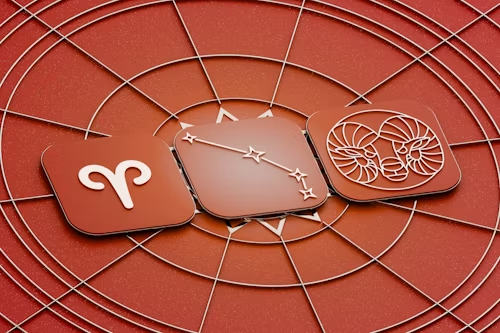Introduction
If you’ve been diagnosed with sleep apnea, your doctor probably mentioned CPAP, APAP, or BiPAP therapy. These machines may sound similar, but they work in unique ways. Choosing the right one can make all the difference in how well you sleep and how comfortable your therapy feels.
Let’s break it down in simple terms — no medical jargon, just clarity.
Understanding Sleep Apnea
Sleep apnea happens when your breathing stops and starts repeatedly during sleep. This can lead to daytime fatigue, snoring, and serious health issues like heart disease or high blood pressure.
PAP (Positive Airway Pressure) therapy keeps your airway open using pressurized air, preventing those breathing interruptions.
What Is CPAP?
CPAP (Continuous Positive Airway Pressure) delivers a constant, steady stream of air pressure throughout the night.
How CPAP Works
A CPAP machine uses one fixed pressure level — set by your doctor — to keep your airway open.
Benefits of CPAP
- Proven effectiveness for mild to moderate sleep apnea
- Simple setup and operation
- Reliable and widely available
Limitations
- Some users find the constant pressure uncomfortable
- Adjusting to the fixed air flow may take time
What Is APAP?
APAP (Automatic Positive Airway Pressure) adjusts the air pressure automatically, based on your breathing patterns.
How APAP Works
It increases pressure when your airway begins to collapse and decreases it when you’re breathing normally.
Advantages
- More comfortable for varying sleep positions
- Adjusts automatically — no manual changes needed
- Ideal for people whose breathing patterns vary nightly
When APAP Is Recommended
Doctors often suggest APAP for patients who find CPAP uncomfortable or who have changing pressure needs.
What Is BiPAP?
BiPAP (Bilevel Positive Airway Pressure) delivers two pressure levels: a higher one when you inhale and a lower one when you exhale.
How BiPAP Works
This two-level system makes breathing out easier and is especially useful for people with more severe conditions.
Who Needs BiPAP?
- People with severe sleep apnea
- Those with COPD or other lung disorders
- Patients who can’t tolerate constant pressure
Pros and Cons
Pros: Easier exhalation, customizable settings
Cons: More expensive and complex than CPAP/APAP
Key Differences Between CPAP, APAP, and BiPAP
| Feature | CPAP | APAP | BiPAP |
| Pressure Type | Fixed | Auto-adjusting | Dual pressure |
| Comfort Level | Moderate | High | Very high |
| Ideal For | Mild sleep apnea | Varying apnea | Severe apnea or lung disease |
| Cost | $ | $$ | $$$ |
CPAP vs APAP: Which Is Better?
For most users, APAP wins on comfort because it adapts to your needs automatically. However, CPAP remains the go-to for those who prefer consistency or have insurance limitations.
Choose CPAP If:
- You’re new to PAP therapy
- You need a simple, reliable setup
- Your apnea severity and breathing are stable
Choose APAP If:
- Your pressure needs change nightly
- You prefer an adaptive and comfortable experience
BiPAP vs CPAP: For More Severe Conditions
BiPAP is often prescribed for patients with central sleep apnea or respiratory issues. The exhalation relief makes it easier to breathe naturally.
Medical Conditions That Require BiPAP
- COPD
- Obesity hypoventilation syndrome
- Neuromuscular disorders
Machine Features to Consider
Before you buy, compare features that improve comfort and usability.
Humidifiers
Reduce dryness and congestion.
Ramp Features
Start with low pressure that gradually increases as you fall asleep.
Noise Levels
Modern PAP machines are whisper-quiet, averaging around 25–30 decibels.
Smart Connectivity
Track your sleep data via mobile apps or cloud-based platforms.
Mask Compatibility Across Machines
The right mask can make or break your therapy.
Types of Masks
- Nasal Masks: Ideal for mild users
- Full-Face Masks: Best for mouth breathers
- Nasal Pillow Masks: Lightweight and minimal
Mask Fit Tips
Ensure a snug fit without leaks. Each PAP machine type supports all mask categories with the correct connector.
Insurance and Cost Considerations
Insurance Coverage
Most insurance plans cover part or all of the cost with a valid prescription.
Average Costs
- CPAP: $300–$800
- APAP: $600–$1,200
- BiPAP: $1,000–$3,000
Maintenance and Replacement
Clean your equipment regularly to prevent bacteria buildup.
| Component | Replacement Schedule |
| Mask Cushion | Every 3 months |
| Tubing | Every 6 months |
| Filter | Monthly |
| Headgear | Every 6–12 months |
Common Issues and Troubleshooting
Air Leaks
Adjust your mask or replace worn parts.
Dryness or Congestion
Use a heated humidifier.
Pressure Problems
Consult your doctor for pressure adjustments.
Expert Recommendations
Sleep specialists recommend starting with CPAP for most patients, upgrading to APAP for flexibility, or BiPAP if you have advanced breathing disorders. Regular follow-ups ensure your therapy remains effective.
Conclusion
Choosing between CPAP, APAP, and BiPAP doesn’t have to be confusing.
- CPAP: Best for simplicity and consistency
- APAP: Best for flexibility and comfort
- BiPAP: Best for severe or complex conditions
Always consult your sleep specialist before making the final choice — comfort and effectiveness go hand in hand for long-term success.

